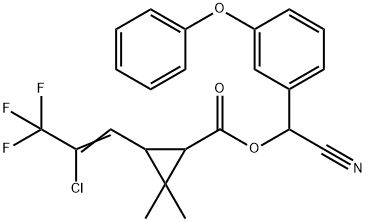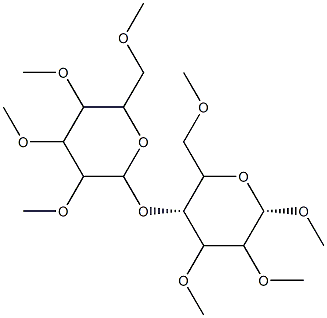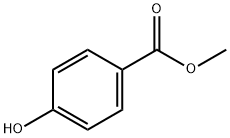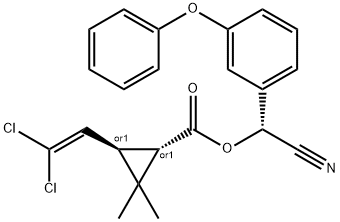Cyhalothrin
- CAS NO.:68085-85-8
- Empirical Formula: C23H19ClF3NO3
- Molecular Weight: 449.85
- MDL number: MFCD00144031
- EINECS: 268-450-2
- SAFETY DATA SHEET (SDS)
- Update Date: 2025-07-04 15:18:23

What is Cyhalothrin?
The Uses of Cyhalothrin
Cyhalothrin is used mainly for ectoparasite control on animals. Lambda-cyhalothrin has public health use and is also used for the control of a variety of insect pests in potatoes (Colorado beetle), cereals, hops, vegetables, cotton and other crops.
The Uses of Cyhalothrin
Insecticide; acaricide.
What are the applications of Application
Cyhalothrin solution is a synthetic insecticidal solution
Definition
ChEBI: A carboxylic ester obtained by formal condensation between 3-(2-chloro-3,3,3-trifluoroprop-1-en-1-yl)-2,2-dimethylcyclopropanecarboxylic acid and cyano(3-phenoxyphenyl)methanol.
General Description
Colorless solid. Insoluble in water. Used as a wide spectrum insecticide.
Air & Water Reactions
Insoluble in water.
Reactivity Profile
Cyhalothrin is a trifluoromethyl pyrethrine derivative.
Metabolic pathway
Cyhalothrin is similar in structure to cypermethrin but with one of the chlorine atoms replaced by a trifluoromethyl group. This substitution appears to result in greater lipophilicity. Cyhalothrin is used in animal health and the more active isomer mixture, lambda-cyhalothrin, has the main crop use. Only a limited amount of information has been published in the scientific literature. What is available indicates that the metabolism and environmental fate of the cyhalothrins are very similar to those of cypermethrin. Both compounds have been the subject of UK Pesticide Safety Directorate evaluations (referred to as PSD in parentheses below).
Degradation
Cyhalothrin is stable to decomposition and to cis-trans isomerisation for at least 4 years in the dark. It is a photostable pyrethroid. It is hydrolysed at high pH to afford the acid (2) and the cyanohydrin (3) which decomposes to 3-phenoxybenzaldehyde (4,3PBAl).
Properties of Cyhalothrin
| Melting point: | <10 °C |
| Boiling point: | 187-190 °C(Press: 0.2 Torr) |
| Density | 1.25 g/cm3(Temp: 25 °C) |
| vapor pressure | 1×10-6pa 20°C |
| Flash point: | 2 °C |
| storage temp. | 2-8°C |
| solubility | Chloroform (Slightly), DMSO (Slightly) |
| Water Solubility | 0.004 mg l-1 (20 °C) |
| form | Solid |
| color | White to Off-White |
| EPA Substance Registry System | Cyhalothrin (68085-85-8) |
Safety information for Cyhalothrin
| Signal word | Danger |
| Pictogram(s) |
 Flame Flammables GHS02  Exclamation Mark Irritant GHS07 |
| GHS Hazard Statements |
H225:Flammable liquids H302:Acute toxicity,oral H312:Acute toxicity,dermal H319:Serious eye damage/eye irritation H332:Acute toxicity,inhalation H412:Hazardous to the aquatic environment, long-term hazard |
| Precautionary Statement Codes |
P210:Keep away from heat/sparks/open flames/hot surfaces. — No smoking. P273:Avoid release to the environment. P280:Wear protective gloves/protective clothing/eye protection/face protection. P305+P351+P338:IF IN EYES: Rinse cautiously with water for several minutes. Remove contact lenses, if present and easy to do. Continuerinsing. |
Computed Descriptors for Cyhalothrin
New Products
4,4-Difluoropiperidine hydrochloride tert-butyl 9-methoxy-3-azaspiro[5.5]undecane-3-carboxylate Indole Methyl Resin N-Isopropylurea N,N-Dicyclohexylcarbodiimide(DCC) MELDRUMS ACID 5-METHYLISOXAZOLE-4-CARBOXYLIC ACID Magnessium Bis glycinate Zinc ascorbate 1-bromo-2-butyne 2-acetamidophenol 9(10H)-anthracenone Erythrosin B, 4-Piperidinopiperidine 2-((4-morpholinophenylamino) (methylthio) methylene) malononitrile 2,4-dihydroxybenzaldehyde 3-(4-morpholinophenylamino)-5-amino-1H-pyrazole-4-carbonitrile Methyl 2-methylquinoline-6-carboxylate 2,6-dichloro-4-nitropyridine 4-Bromo-2-chlorobenzonitrile 2-(benzylamino)acetic acid hydrochloride 4-(tert-Butoxycarbonylamino)but- 2-ynoic acid 3,4-dihydro-2H-benzo[b][1,4]dioxepine 1-Phenyl-1-cycloprppanecarboxylicacidRelated products of tetrahydrofuran








You may like
-
 Cyhalothrin CAS 68085-85-8View Details
Cyhalothrin CAS 68085-85-8View Details
68085-85-8 -
 3-(4-amino-1-oxoisoindolin-2-yl)-1-methylpiperidine-2,6-dione 98%View Details
3-(4-amino-1-oxoisoindolin-2-yl)-1-methylpiperidine-2,6-dione 98%View Details -
 614-19-7 98%View Details
614-19-7 98%View Details
614-19-7 -
 3112-85-4 Methyl phenyl sulfone 98%View Details
3112-85-4 Methyl phenyl sulfone 98%View Details
3112-85-4 -
 20677-73-0 (2,2-diethoxyethyl)methylamine 98%View Details
20677-73-0 (2,2-diethoxyethyl)methylamine 98%View Details
20677-73-0 -
 3-(4-(hydroxyamino)-1-oxoisoindolin-2-yl)piperidine-2,6-dione 98%View Details
3-(4-(hydroxyamino)-1-oxoisoindolin-2-yl)piperidine-2,6-dione 98%View Details -
 57381-49-4 2-bromo-4-chlorobenzonitrile 98%View Details
57381-49-4 2-bromo-4-chlorobenzonitrile 98%View Details
57381-49-4 -
 4,6-dichloropyrimidine-5-carbaldehyde 98%View Details
4,6-dichloropyrimidine-5-carbaldehyde 98%View Details
5305-40-8
